Futures
A Potential For Peace
In honor of its 75th anniversary, the United Nations called on designers and futurists to imagine how a future of sustained peace could take shape.
The call is timely—the UN framed its initiative as a search for “speculative design artifacts that evoke novel futures of how to sustain peace” at a moment rife with clashes over racial justice and staggering inequality in the United States, rising global tensions over a pandemic, ongoing regional conflicts, and the fracturing of longstanding international coalitions.
How do we imagine peace in a time of ongoing chaos?
Our world today presents us with a unique opportunity to humanize technology over the long term. More importantly, the call to imagine the Future of Peace challenges us to humanize each other.
At Narrative, we take seriously the responsibility of building a better future—and believe our work succeeds when it moves us closer to a future we want to be a part of while ensuring the same for generations to come.
To accomplish this, we pay close attention to trends in human behavior: what people want, what they need, and how they innovate to achieve it.
Lately, we’re noticing:
- The continued desire for technological mobility—having information, and experiences, available to access at one’s fingertips
- Young people leading the efforts to create new conditions of equity and safety that allow peace to flourish—in recent Black Lives Matter protests across the U.S., the largest turnout was 18- to 34-year-olds, and it was teenage survivors of the school shooting in Parkland, Fla. who started the “Never Again” movement for stricter gun legislation just 4 days after the tragedy
- How, in lieu of trusting written histories or government bodies, people turn to crowd-sourced information, graffiti, poetry and protest art, community gatherings, and narrative storytelling to send messages of truth and unity
- A rising up in support of marginalized voices and a curiosity to know the real truth about these groups, people, and histories in order to architect a more equitable future
- The polarization of history lessons in regions with histories of conflict—by ignorance and by design. Formal lessons in civics are in decline, and yet we know that the goals of education—understanding, empathy, and context—are central to minimizing conflict and maximizing peace
These related trends informed Narrative’s speculative design for the UN’s Design Futures Initiative:
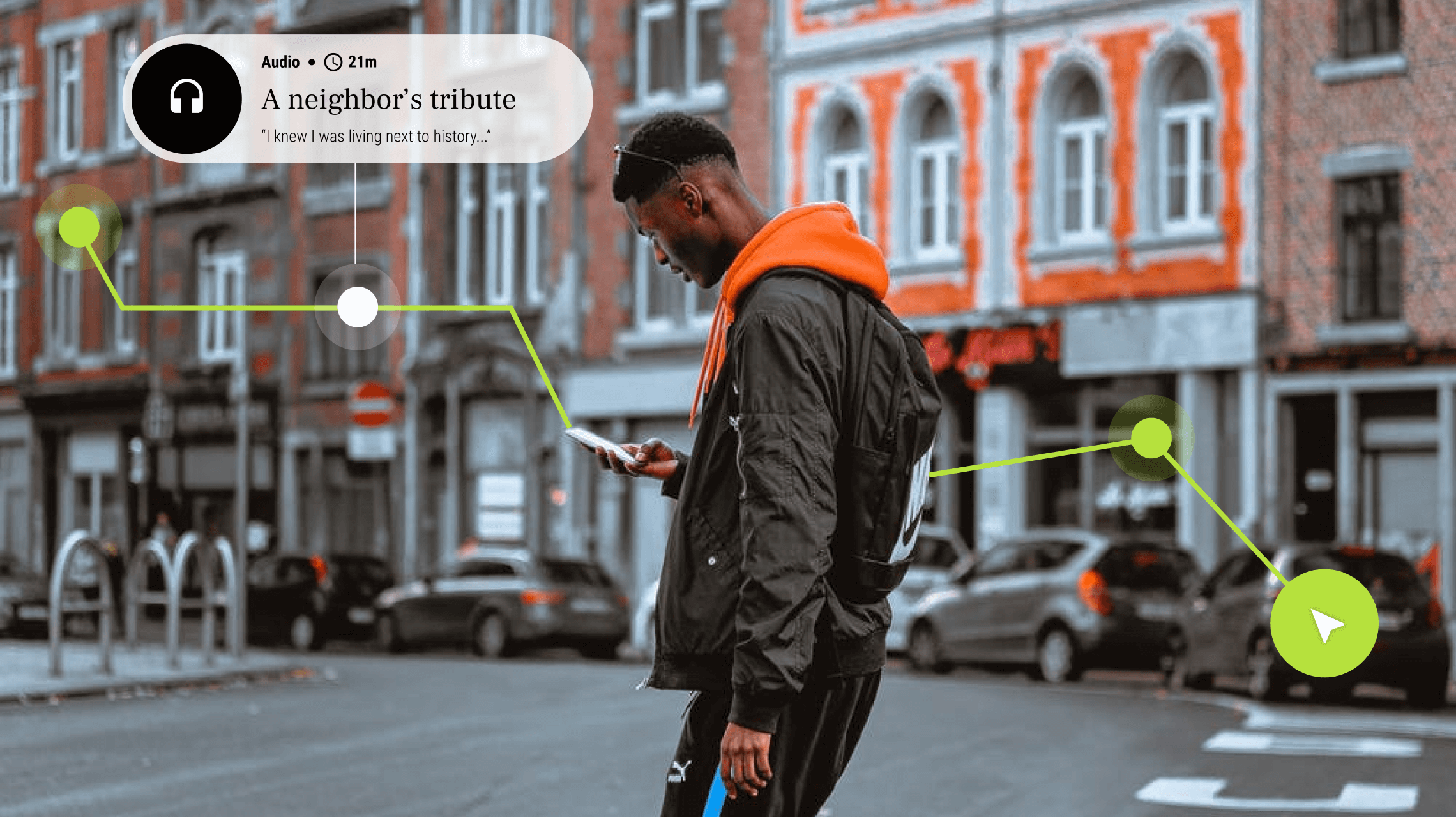
Sojourn helps people learn stories of peace and conflict in the cities they explore by connecting the energy of protest movements and crowdsourced audio and documentary histories with a rich context that exists in official historical records. We hope that helping people discover a full contextual understanding of the what, how, and why of the past can create a map toward the present—and better inform their own decisions and actions toward the future.
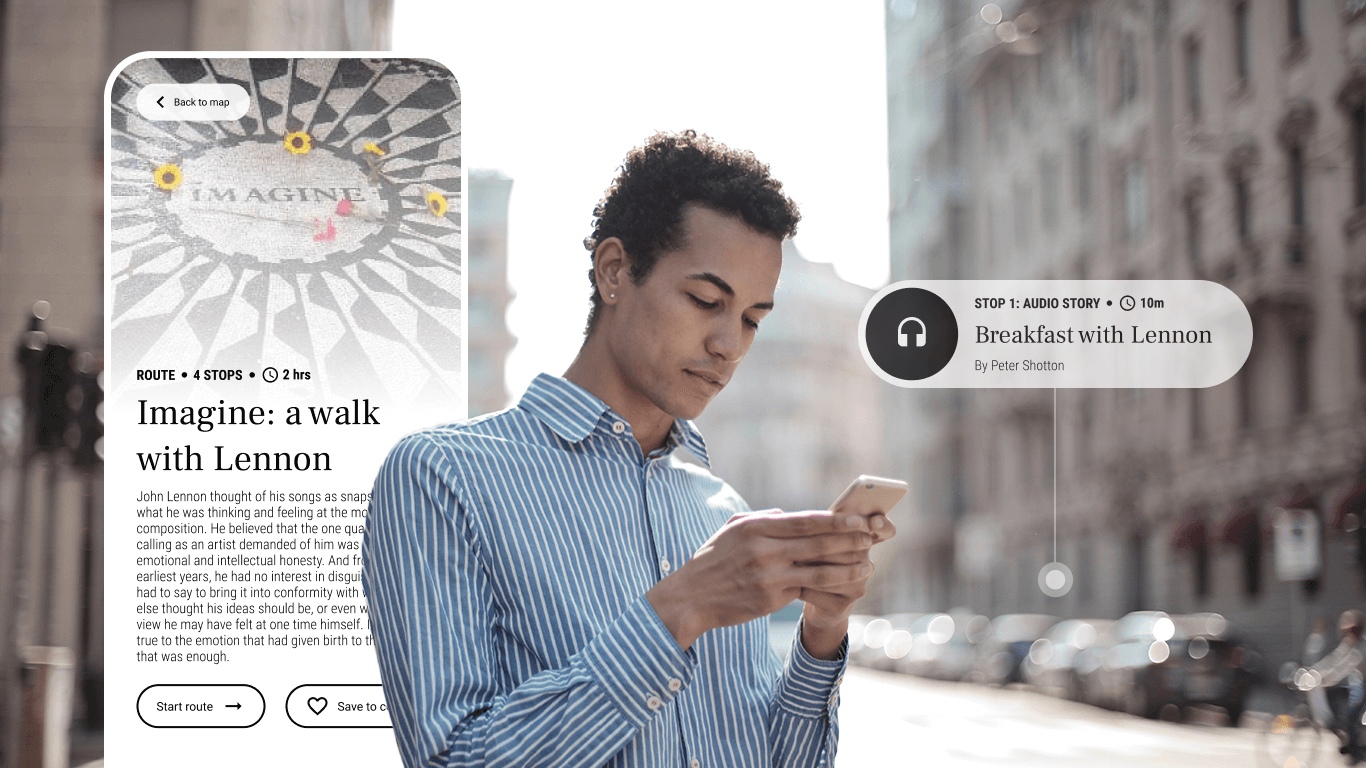
Curious about the significance of the spot, you pull out your phone and open Sojourn. The GPS locates you, and a dialogue box pops up: you’re standing in front of the Dakota Apartments—the location of John Lennon’s assassination in 1980. You click to read about the event and learn about Yoko Ono and the active role John and Yoko took in persuading people to protest against the Vietnam War and call for a world of peace.
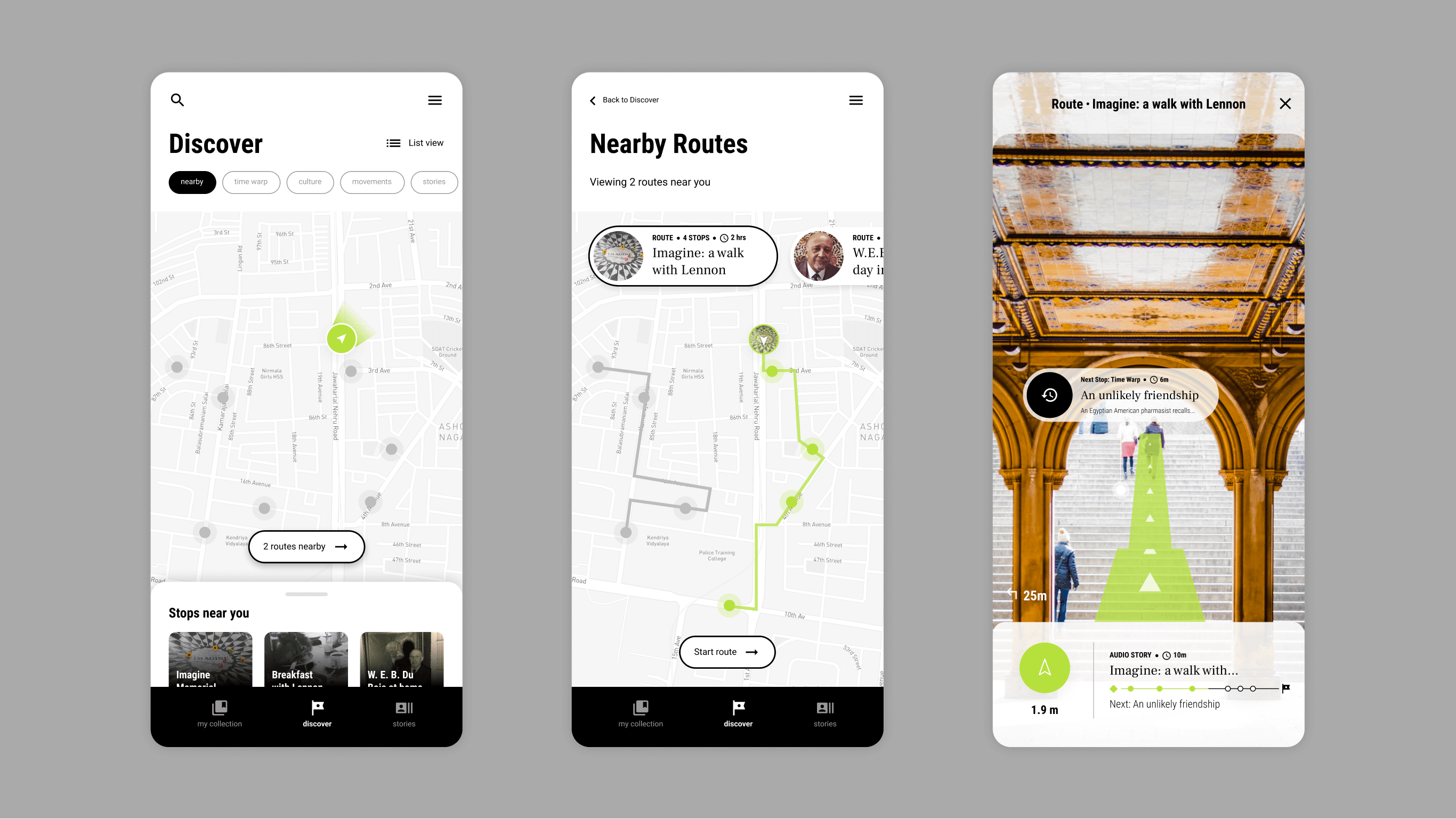
You visit his former recording studio, a favorite diner, and Strawberry Fields, his memorial in Central Park. It also lets you search and find other interesting bits of history in the neighborhood.
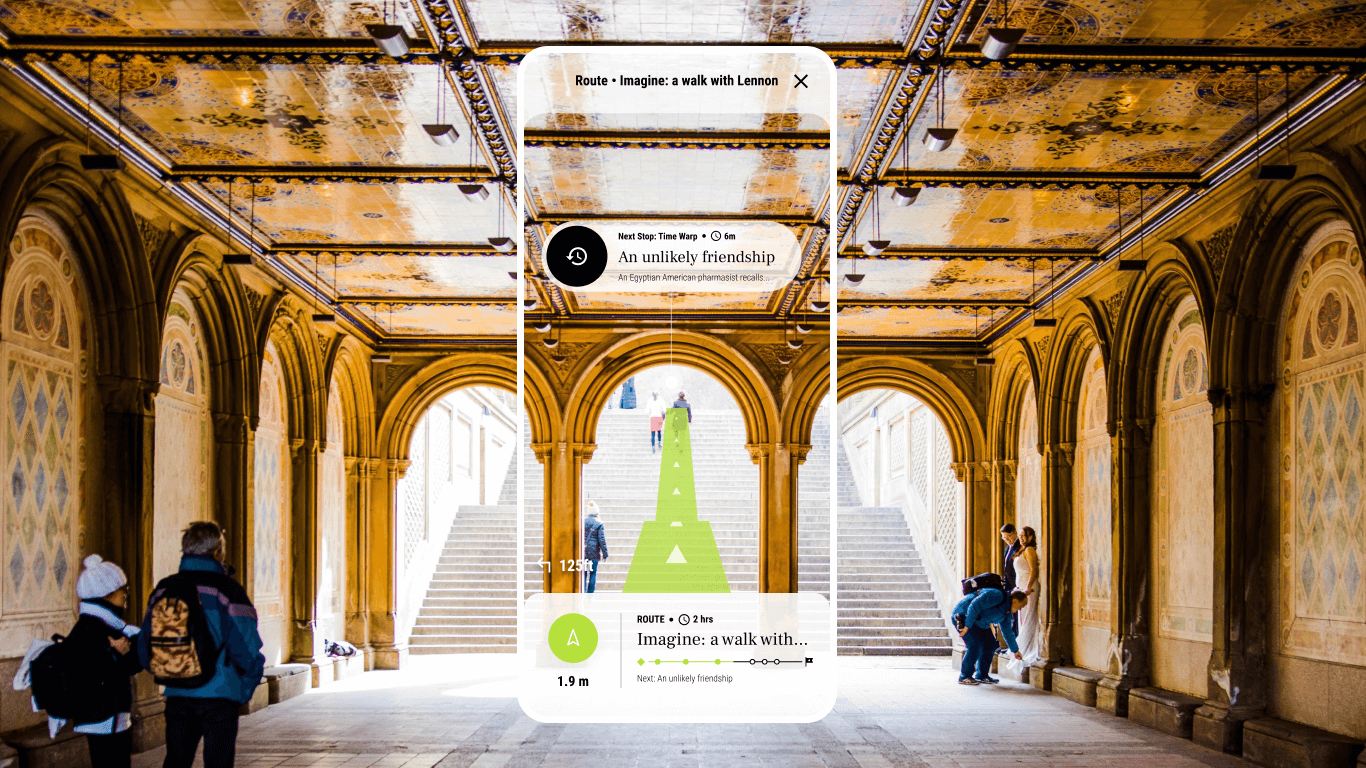
You view options to sync with audio history clips from John’s friends, family, and former bandmates—or to listen to some of his most inspired songs like “Give Peace a Chance” and “Imagine.”
Now that you have the gist of how this works, let’s look at other possible filters and functionality in a platform like this—including explorations through time, political and cultural movements, and opportunities to leave your own mark inside a living history.
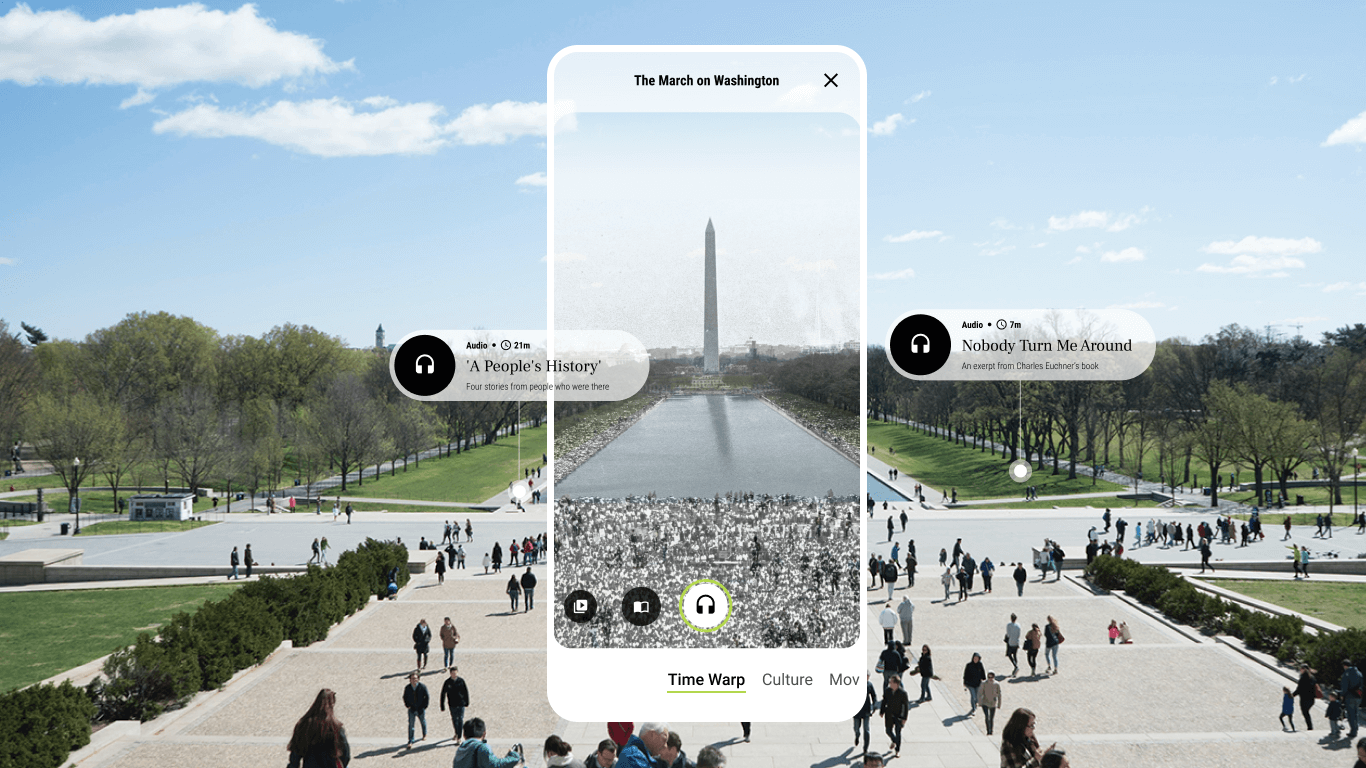
In this case, transforming the National Mall in front of you to the 1963 March on Washington at the crux of the Civil Rights Movement. Your screen comes alive with the thousands of protestors shoulder-to-shoulder, the Washington Monument looms in the background, and audio clips from real people present on that day begin to play.
What may not exist in history books is right here—at your fingertips—stories and testimony from the underrepresented, the discriminated, the fringe, and the “forgotten.” Your formal education of the place and time is supplemented with the richer details of the story, allowing for greater empathy and understanding of a time that shaped much of what you, too, are living through, whether or not you know it.
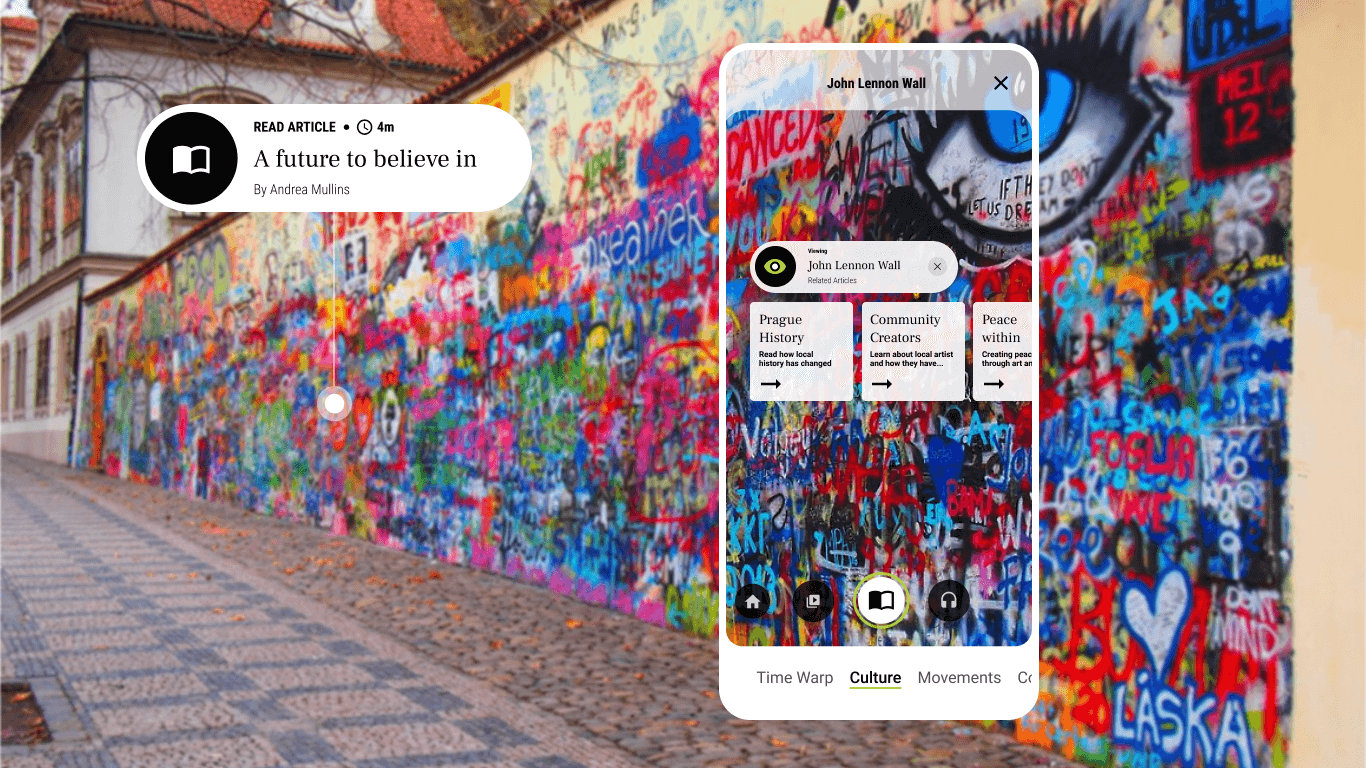
Layers of paint explode into the overcast day—words like “dreamer,” “imagine,” and “love” fill the void, surrounded by peace signs and portraits of a man with small round glasses. You pull out Sojourn and flip to the Culture effect—you’re standing in front of the famous John Lennon wall that, since 1981, when a single portrait of the man was painted shortly after his assassination, has signified peace and hope for pacifist Czechs. Now, you can read, listen, and learn about art’s place in totalitarian governments, life in Eastern Europe behind the wall, and how music shaped Czech culture over thousands of years..
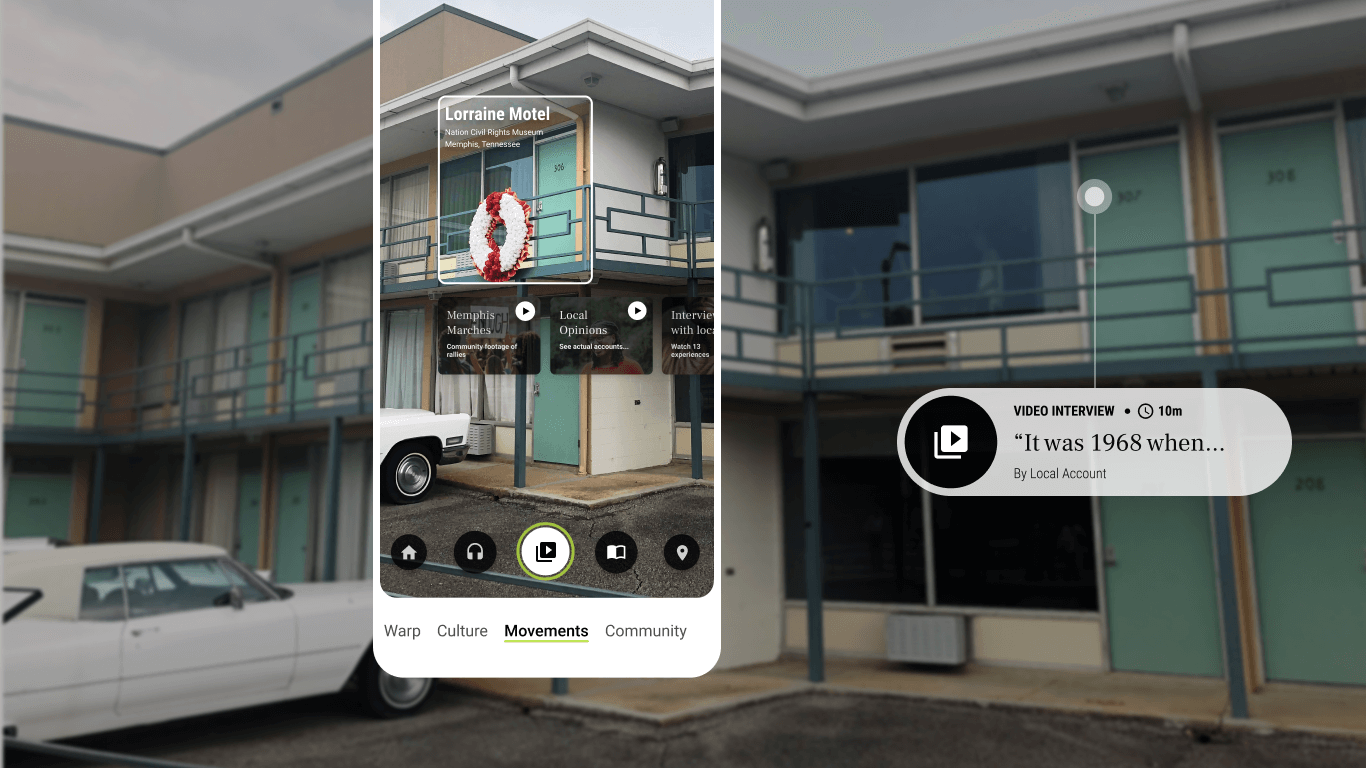
Sojourn’s Politics filter fills the gaps, sharing that the famous hotel had long been a stop in the Negro Motorists Green Book or “Green Guide,” which offered safe lodging for Black travelers during the Jim Crow era. Or how Reverend Samuel “Billy” Kyles organized on behalf of Black workers’ rights for years before he came to stand on that balcony with King. Or how Ben Branch’s Jazz career led him to hearing MLK’s last words—and what a marvelous saxophonist he was.

The goal of this project is to share and unite documented and personal histories, and also to amplify the voices making history today. As you march, paint, write, travel, work, and explore, your actions can create a continued future of understanding and peace.
Subscribe to our newsletter
Receive email updates to stay informed about our latest blog posts, design futures, and company updates.
